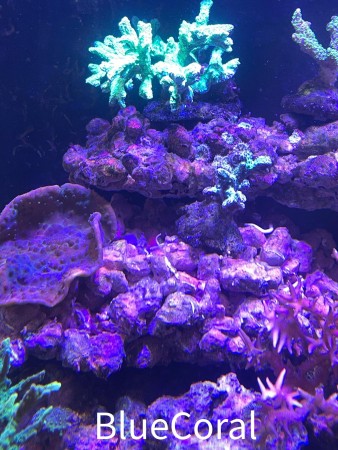Live Rock importance and usefulness
- May 23, 2021
- Arianna Rizzi
- 819 1 0

Live rocks are fragments of limestone material of coral origin that are detached from the reef and exported for sale on the aquarium market. Live rocks are used for two basic and fundamental reasons:
- 1 Structural and aesthetic: the live rock gives a very natural look to the aquarium and the basis on which you will collocate live corals, crustaceans and fish. after some months, will tend to be cemented thanks to the work of the calcareous algae.
- 2 biological filtrations: the conversion of waste and excess nutrients into some innocuous form by means of organism metabolism.
Unlike freshwater aquarium, that has how main biological filter, the porous material inside the filter, in reef aquarium we rely on these fantastic rocks because they have two main properties:
- A high porosity that porosity must be sufficiently small so that the rock contains many pores and cavities, for only if there is a lot of pore space is there going to be sufficient filter area to colonize the bacterial populations of the Nitrosomonas and Nitrobacter bacteria that produce the actual chemical changes. These bacteria perform the transformation process of the Ammonium to Nitrite and then in Nitrate, (inside we have anaerobic bacteria, in exterior part, aerobic bacteria) then lowering chemically all the waste substances of the animals and that would be dangerous for their health. Finally, the interior of the rock must provide the appropriate physical environment, primarily slow water flow and low oxygen concentrations, to facilitate the appropriate bacterial processes.
- Each rock is populated by hundreds of protozoa micro-invertebrates and those contributes significantly to the aquarium ecosystem biodiversity and consequently to its stability. The encrusting fauna consists mostly of tiny worms, crustaceans and molluscs, that feeding contribute to the removal of debris and cancellation of some pollutants dissolved in water. Moreover, the rocks release continuously larvae of organisms that enrich the Plankton of the tank, an important source of live food for invertebrates. Creating a real food chain that could not be created artificially by purchasing microorganisms from the merchants but that with the maturation occurred in the sea, imported directly into our tank.

How can understand if a live rock is of good quality or not?
A living rock of excellent quality has a porous, spongy structure with numerous holes and cavities. A not good rocks is often covered by a thin slurry and gives off a strong smell of decomposition by the death of micro-organisms.
How to take care of the live rock?
During the shipping process of all live rock, the biodiversity present on all transported live rock, undergo some degree of natural die-off. For this reason, before putting all live rock in the tank, it is better that live rock must be cured to create a healthy marine environment.
Many sponges and other organisms found on live rock cannot tolerate shipping very well because they are exposed to air and/or unacceptable temperatures in the process. Thus, many things on live rock will die and rot away within a few days of being collected and transported. There may also be numerous things living inside the rock that die and decay, too. Such decay, whether you can see it or not, produces ammonia in aquariums and ammonia is deadly.
Before putting our Live rock in the tank, it is better to put our rocks in quarantine in a tank without other livestock and maintaining good water quality in the tank for at least a couple of weeks.
To cure live rock properly, you will need the following equipment:
- Protein Skimmer will remove organic waste from your aquarium or container before it breaks down and creates ammonia.
- Powerheads to create ample water flow is key to properly curing live rock.
- Heater Set the heater to 78 to 80º F. The bacteria and organisms found on live rock thrive in the same temperature range as the fish and corals you will eventually be adding to the tank.
- Lights If you are curing live rock inside your aquarium, limit lighting to 4 hours per day to reduce the occurrence of nuisance algae.
Your main concern is the ammonia removal and circulation of the water with powerheads around and through the rock.
Perform water changes as need. Change 15% to 30% of the water a day is NOT much for the first week. If the water stinks, turns yellow, or your skimmer cup overflows often, you will need to change even more water (up to 75%).
It is important to monitor your protein skimmer, especially in the first few days as the nutrient and material load will cause excessive foaming and require cleaning.
Your rock needs minimal to moderate light. In the beginning, too much light will only cause much nuisance algae growth in the nutrient-rich environment. Too much light also causes coralline algae to fade and die – they do not like intense light.
Limiting lighting while controlling ammonia and nitrites should cure your live rock in 2 to 3 weeks.
In about a week you can start testing ammonia. It is better to do it every two or three days, you can test the ammonia and nitrite levels should continually dropping to zero.
When the ammonia and nitrite levels drop to zero, you are done! There should be more good ammonia eating bacteria than bad ammonia making ones.
Your nose can be a good indicator, smell the pieces of rocks If the pieces still stink, then things are still decaying; the fully cured rock has a clean “oceany” smell. If all smells good, you can now move the rock from the tubs into your established tank.








About author